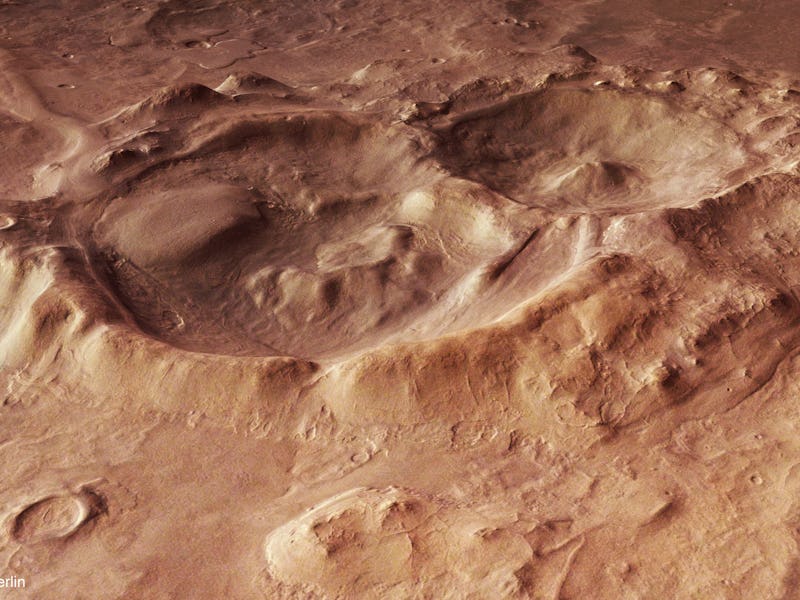Chemists Find New Evidence That Life Might Have Started in Space
Life's primordial soup could have been ice-cold.

These days, humanity’s best bet for explaining how life began comes by way of evolution’s daddy, Charles Darwin, who proposed that the building blocks of life brewed together in a “warm little pond” — a soupy mixture of chemicals that clicked together to form RNA, DNA, and the other nucleic acids that store the instructions for life.
But where was the warm little pond?
Many scientists believe that it existed on Earth, most likely near hot hydrothermal vents on the seafloor. There’s also a small contingent that believes life emerged on land, among volcanic rocks. But there’s an even smaller — but increasingly confident — contingent that thinks life emerged in space, and evidence published in the Journal of Chemical Physics on Tuesday provides support for their daring hypothesis.
The researchers from the University of Sherbrooke in Canada had set out to find out whether the organic molecules that might have made up the primordial soup could have survived the harsh conditions of space in the first place. To do so, they had to build a replica of space — ionizing radiation, vacuum, and all — inside a laboratory.
Blasting molecular ices with rays of electrons under space conditions led to the formation of many small organic molecules found on Earth.
They started by creating icy, frozen films out of water and other elements you’d find in abundance in space, such as methane. ‘Molecular ices’ like these, they explain in their paper, form around grains of dust in space as well as on the surfaces of comets, asteroids, and moons, and it’s in these icy conditions that chemicals would be most likely to come together — if the right catalyst comes along.
If there’s an abundance of one thing in space, it’s radiation, the energy of electromagnetic waves that, crucially, doesn’t need a medium to travel through. It can even move through the vacuum of space (heat from the sun, for example, travels to us via radiation). The researchers theorized, on the basis of previous research, that blasting molecular ices with radiation would spur chemical reactions that create organic molecules, which in turn could come together to form the building blocks of life.
Frozen films of methane and oxygen can be found on comets and the surfaces of other objects in space.
The particular type of radiation they investigated is streams of low-energy electrons, or LEEs — electrons that get knocked off of matter when they’re pelted by other types of radiation, like X-rays. These free electrons get swept up by magnetic fields and flung around space, where they very well could pelt a patch of molecular ice. So, in the cold, icy, vacuum system they built, the researchers set down some frozen films and blasted them with rays of LEEs.
As they did, they watched the creation of life’s precursors take place: Small organic molecules like propylene, ethane, and acetylene formed in frozen methane, embedding themselves into the film, and ethanol was formed in frozen films of oxygen and methane. They also saw traces of methanol, acetic acid, and even formaldehyde, though these were released from the ice, leaving behind their molecular footprint.
Of course, just because these precursors can form in space doesn’t mean they did, and even if that was true, there’s no evidence that they randomly came together to form DNA — at least not yet. But then again, scientists aren’t exactly sure how that would have happened on Earth, either, whether in the sea or on land. And so, just as with so many of humanity’s curious forays into the origins of life as we know it, this discovery has only led to more questions.